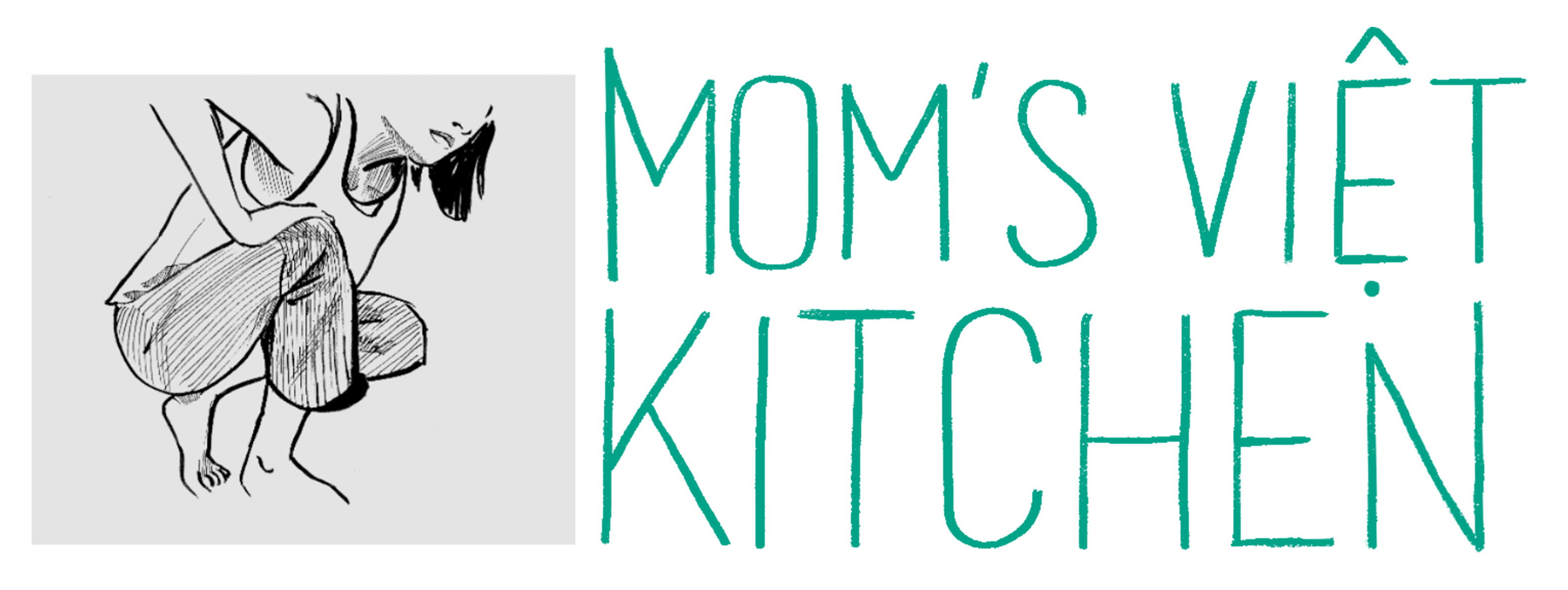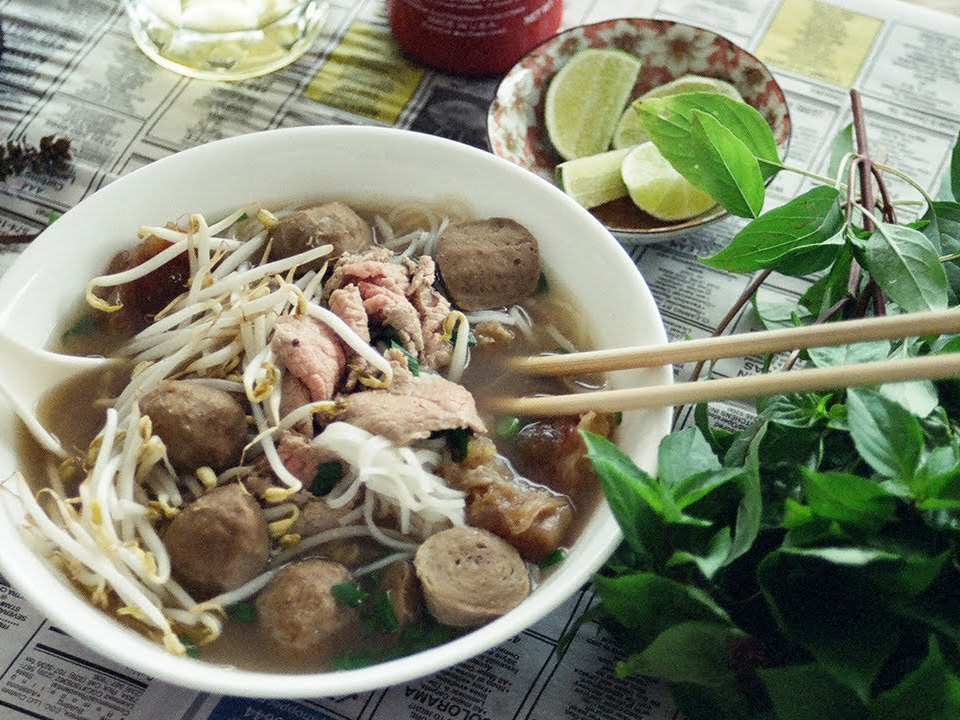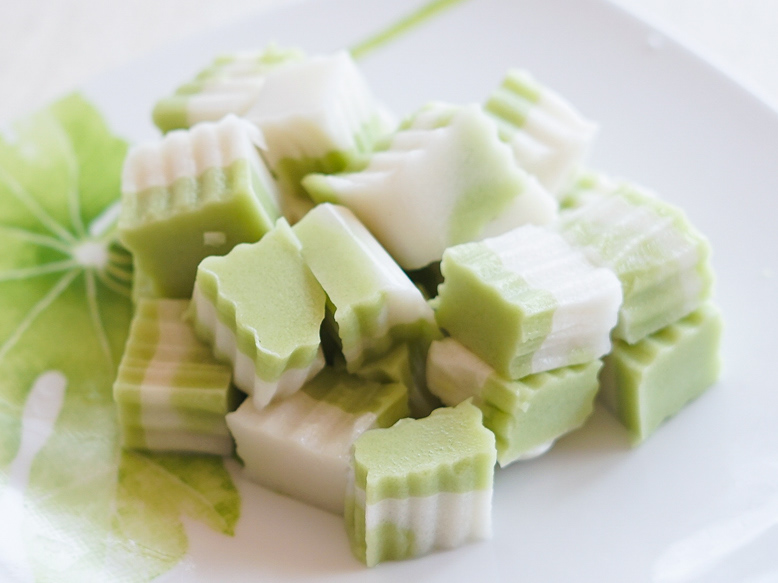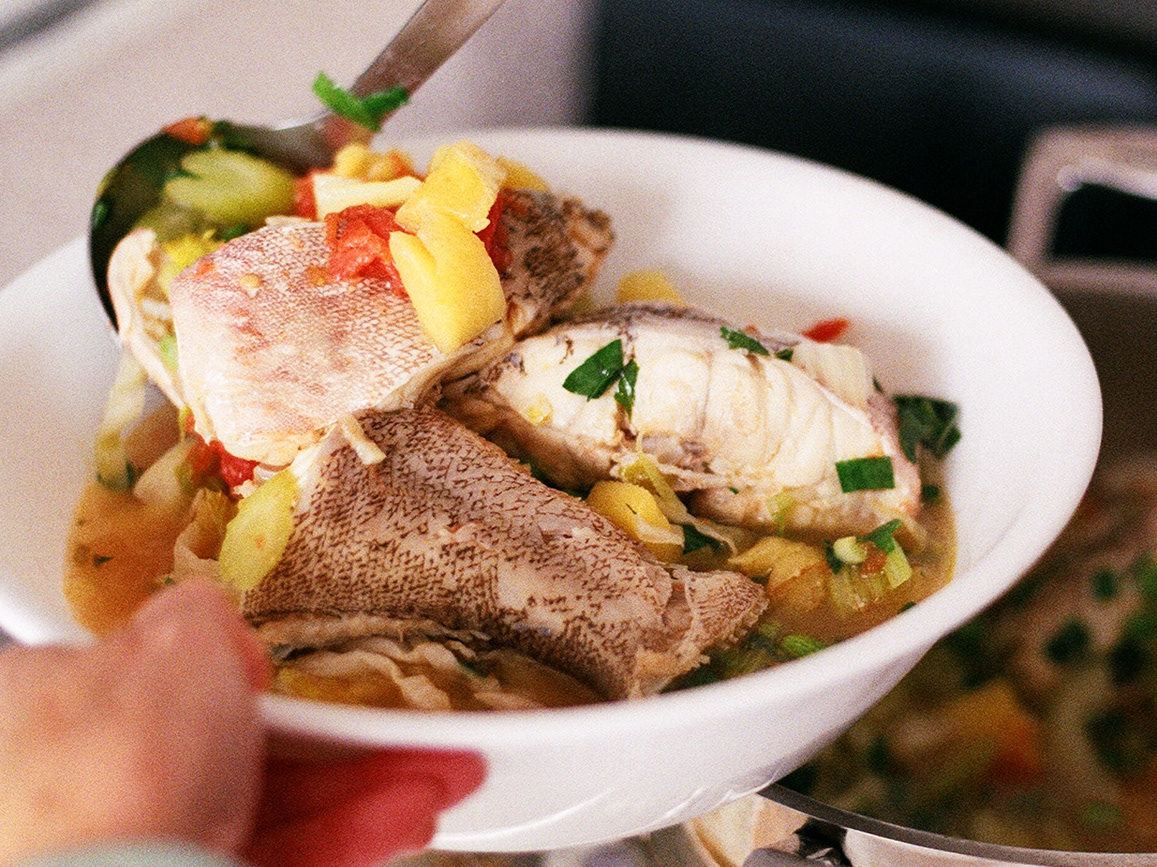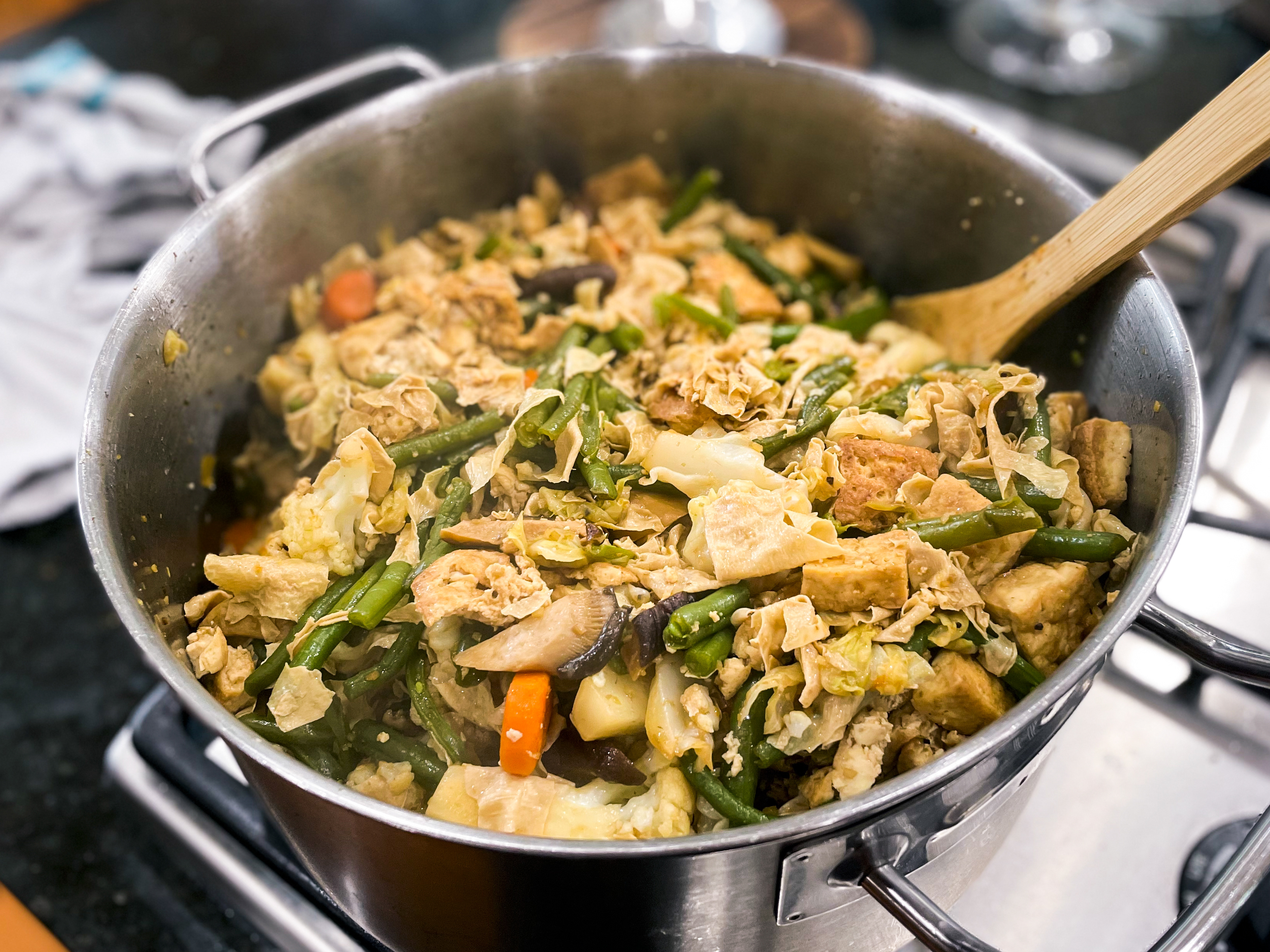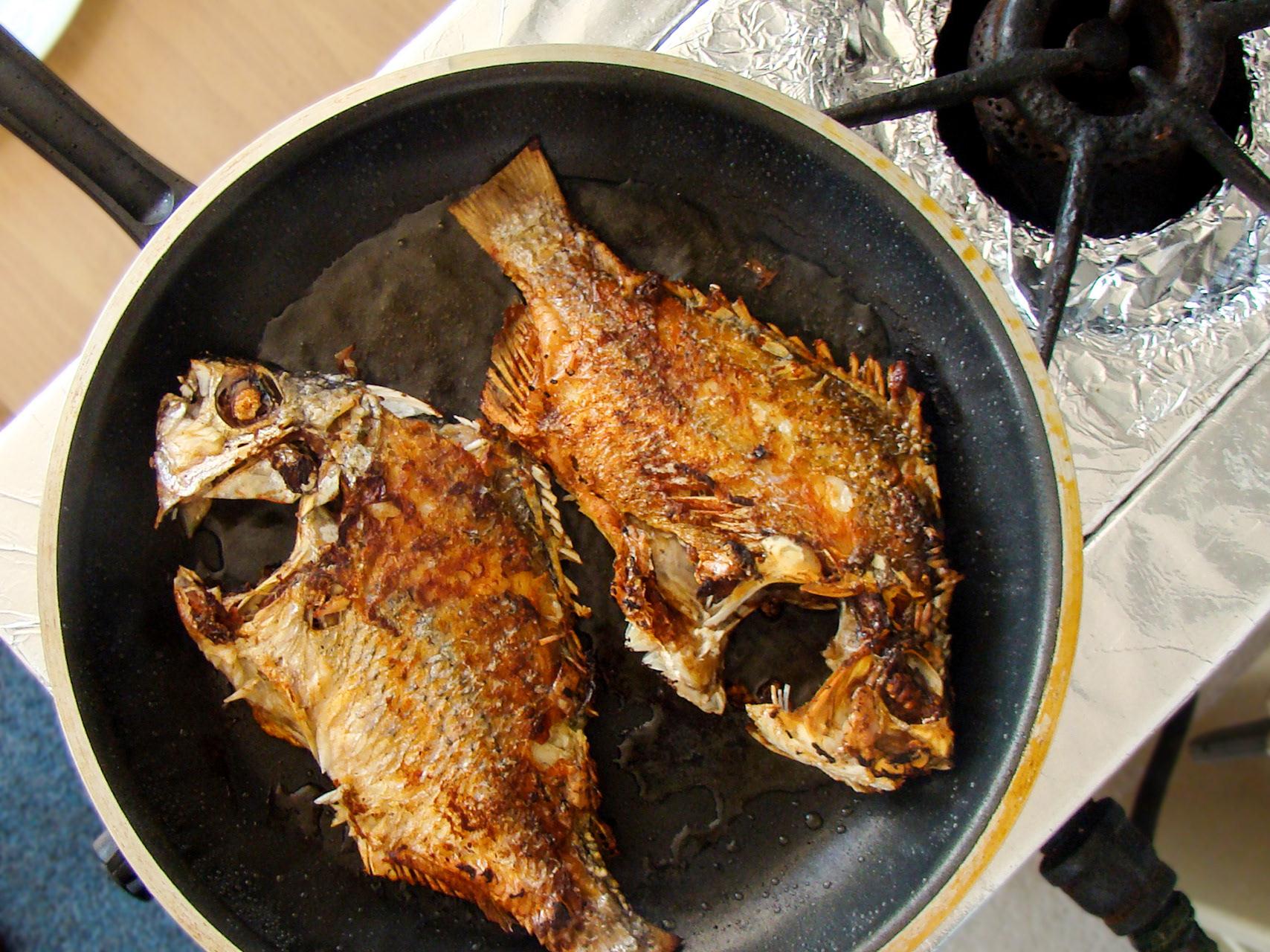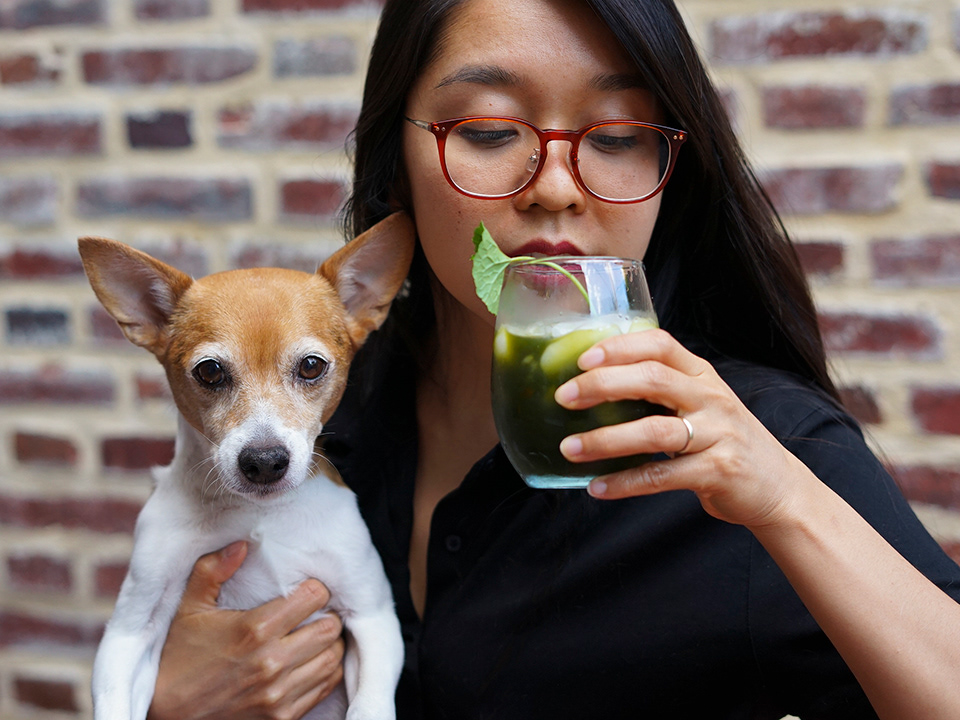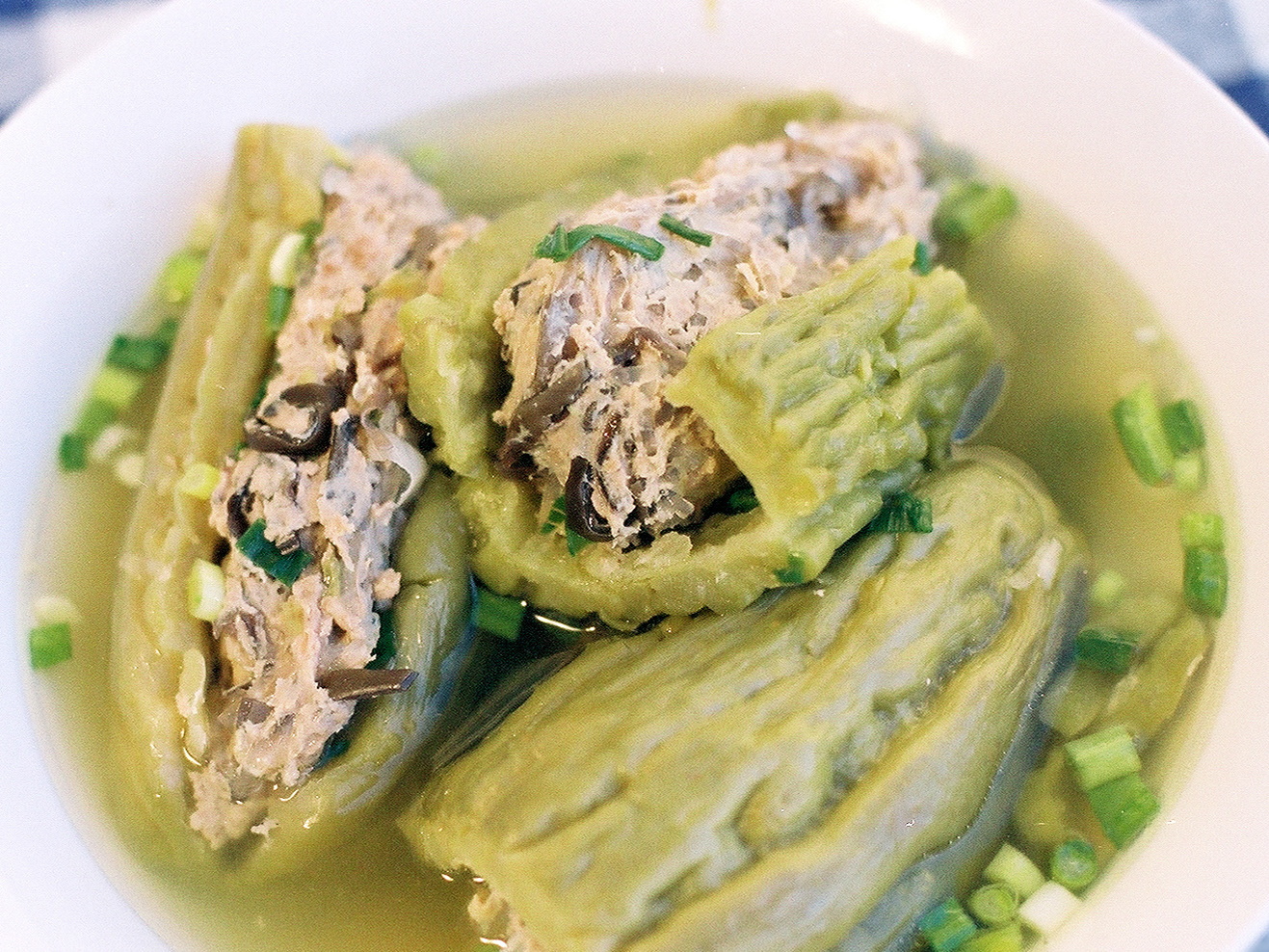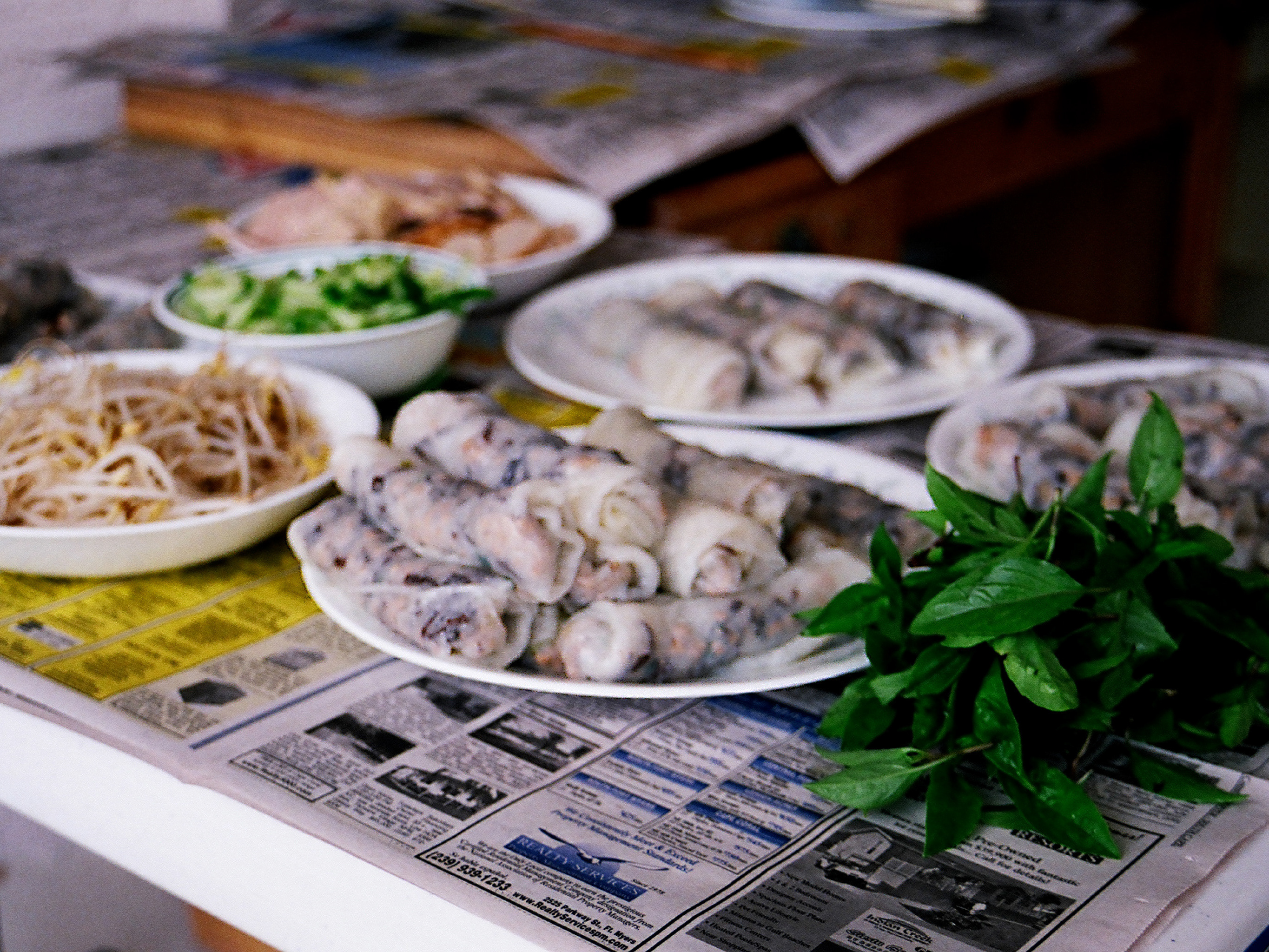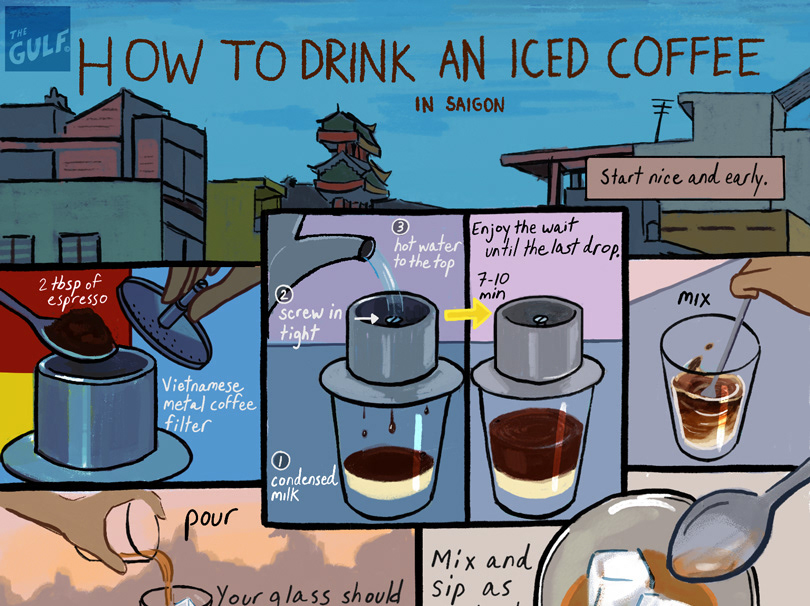Mango-thon
Remembering dad with a three day gathering of harvesting, eating, and celebrating.
by Thu Nguyen & Nguyen Khoi Nguyen
May 2019
May 2019
In late May, an elegant and honeyed fragrance suffuses the house. It’s the smell of ripe mangos, or xoài, and these aren’t like the ones you find in the grocery store. Our xoài are big and sweet, golden hued, and incredibly aromatic. The tropical weather in Cape Coral is perfect for growing them. We had at least 10 mango trees in our yard growing up and the first thing Mom & Dad did when they moved to their new house was plant more mango trees. Fifteen years later, we’ve got around 40 mature mango trees that we harvest each summer. Mom & Dad inevitably end up with more mangos than they can eat, so Mom sends us shipments.
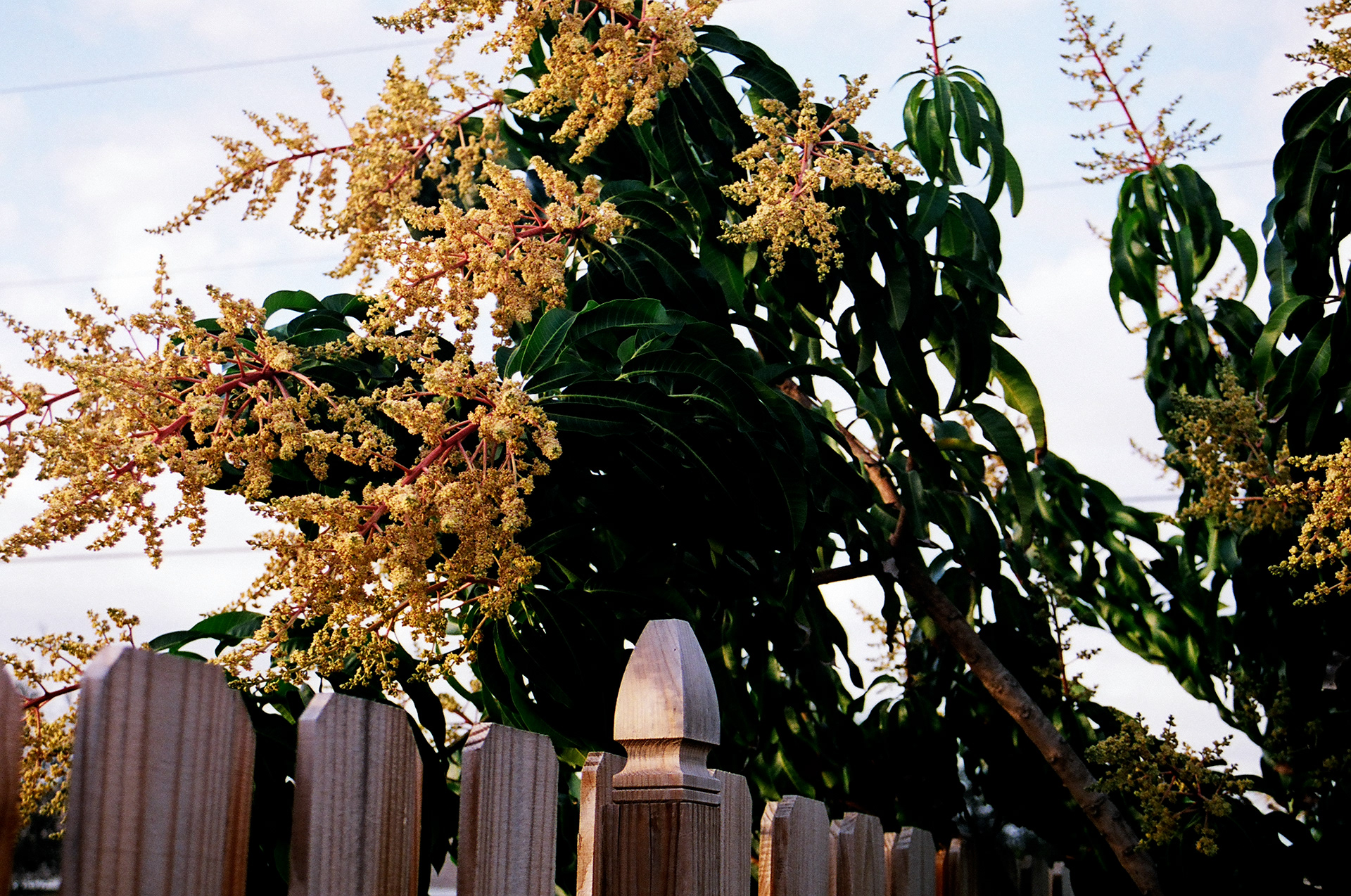
Mango tree in bloom.
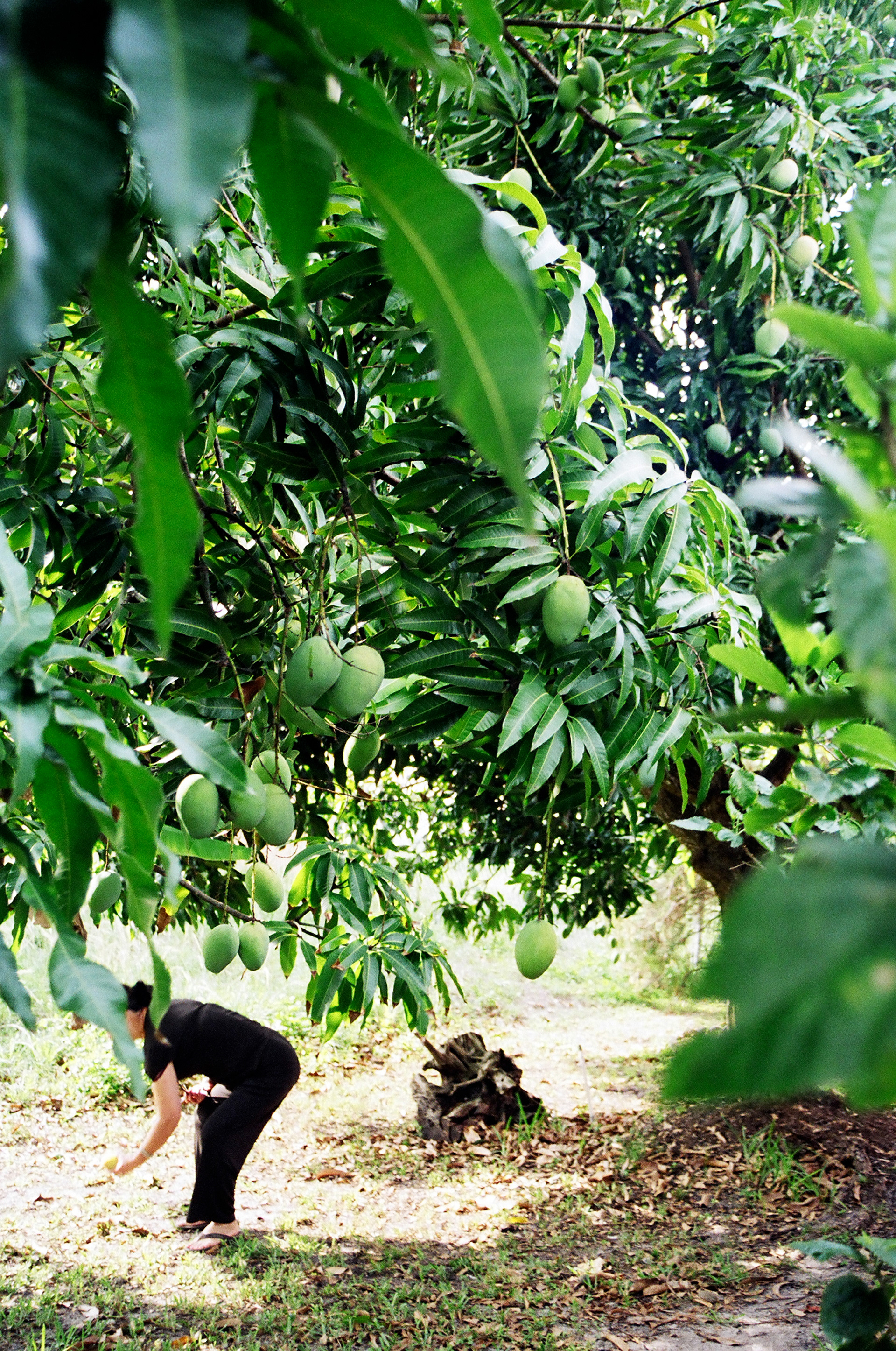
Green mangos on the trees.
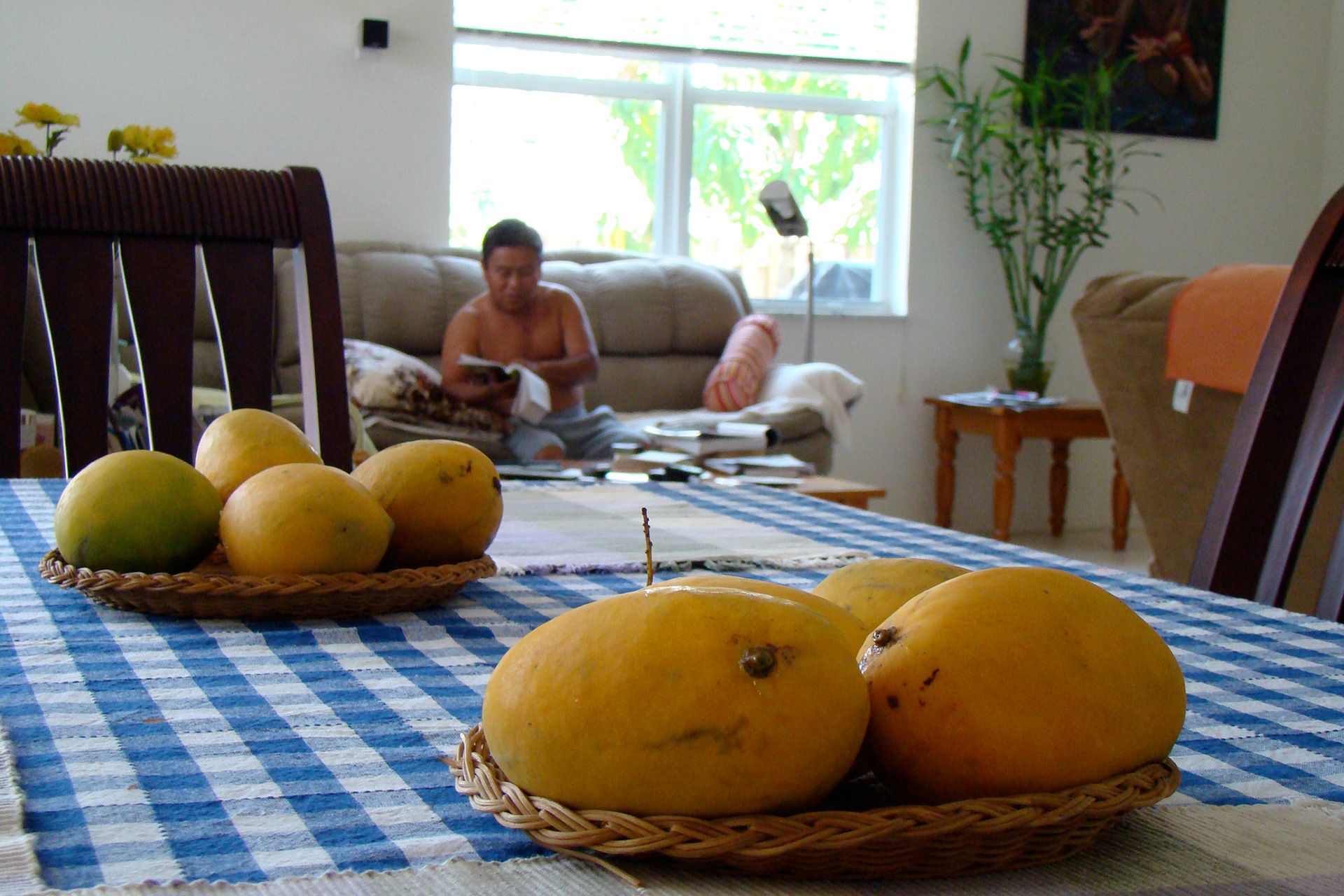
Ripe mangos fill the house with their fragrance.
Photos: Nguyen Khoi Nguyen
We lost Dad this winter. It's been tough carrying on without him but we keep going because that's what he would want. As summer approached, we knew we needed help come harvest time, and we also wanted to share the fruits of Dad’s many years of labor with our loved ones. So, Mango-thon was born— a three-day gathering where friends and family come together to pick mangos and celebrate Dad!
We knew without Dad that mango season was going to be a mad rush. He used to steadily pick the mangos as they ripened over the entire season, but we just had a few days in June to pick everything before they spoiled on the ground. The beauty of picking fruit with more than twenty people is that we filled carloads in a short amount of time. We went out in the early mornings and even then, it was unbearably hot. We only lasted an hour each time. Everyone pitched in: the little ones loved climbing trees to pick, and even some adults got in on the fun. For the mangos that were too high up, we used a harvesting tool consisting of a long pole with a small wire basket attached at the top. Extending above the basket are prongs that you can wiggle around the stem of a mango to loosen it, and then the mango plops into the basket.
Before these tools existed, Dad used to fashion his own. Dad applied his ingenuity to all aspects of the garden, even to the mangos themselves: he spent years grafting different types of mangos to create the perfect breed. Our grandmother originally brought mango seeds from Vietnam and Dad used these seeds to grow fragrant and fiberless varieties of mangos. When we talk about THE mango, we mean the cát hòa lộc mango (Magnifera indica) that you can cut right along the impossibly thin seed and just take a spoon to; it’s so creamy that you can scoop it out like pudding.
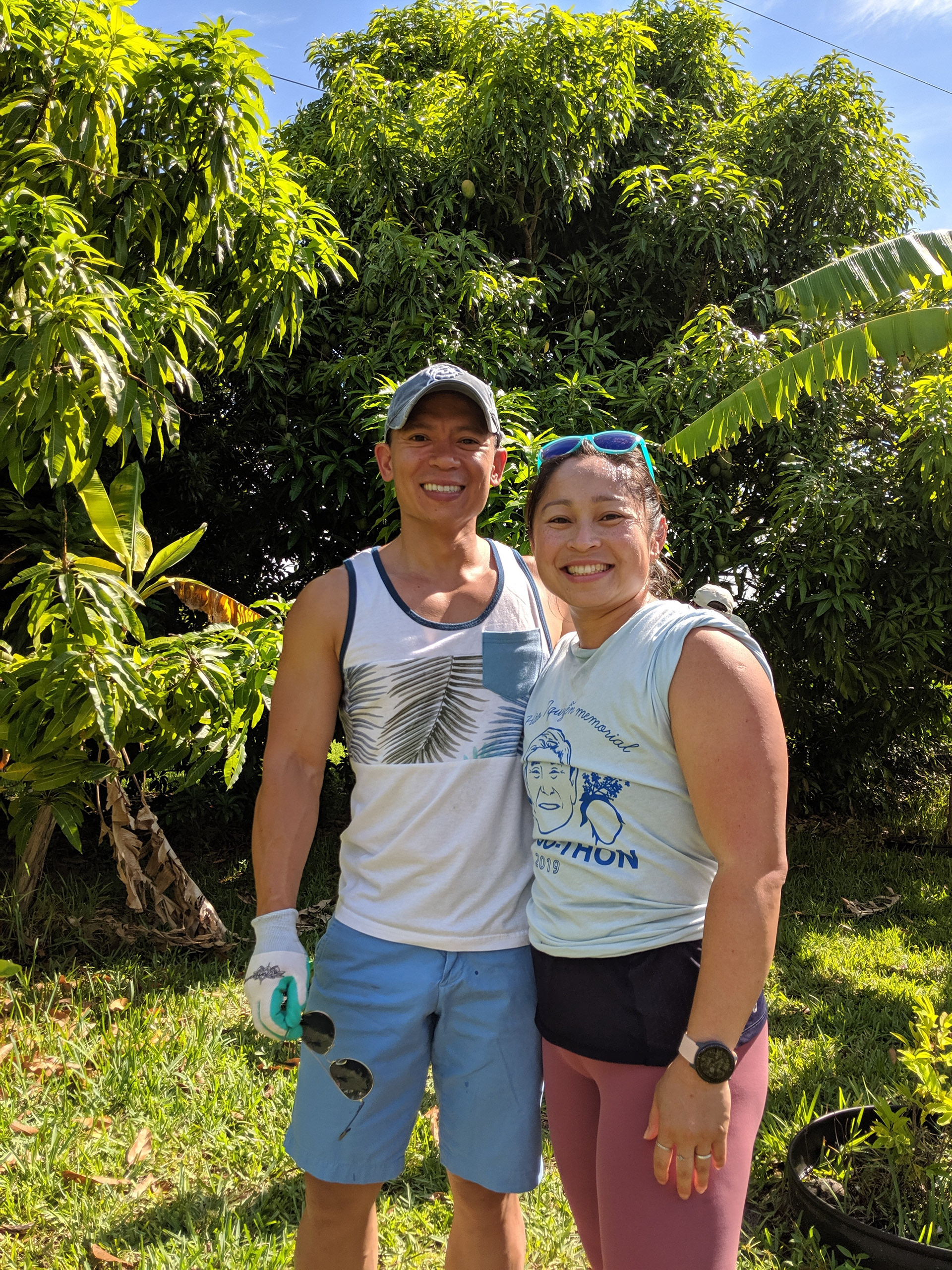
Cousins ready to pick
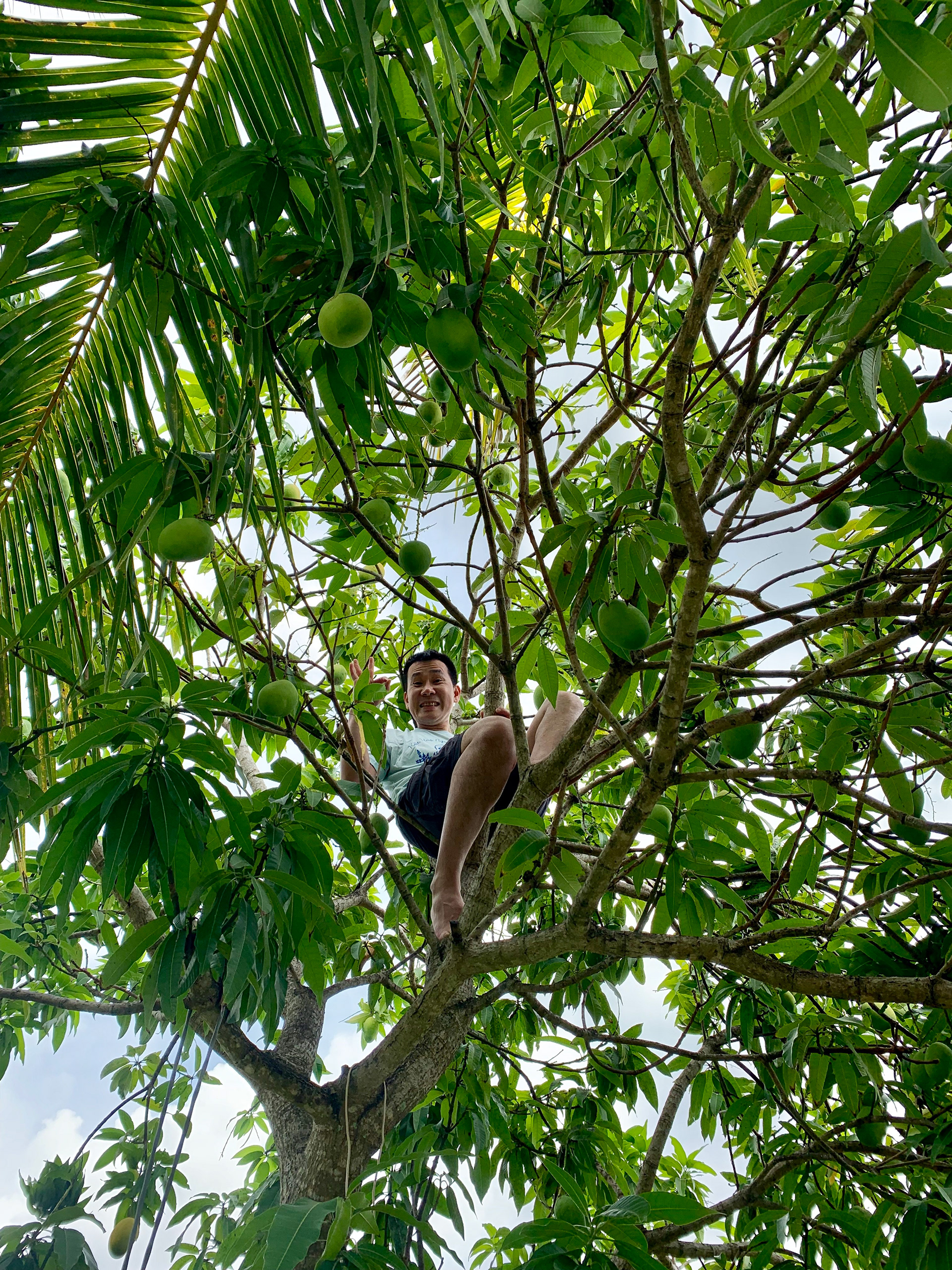
Chau climbed the trees like it was second nature.
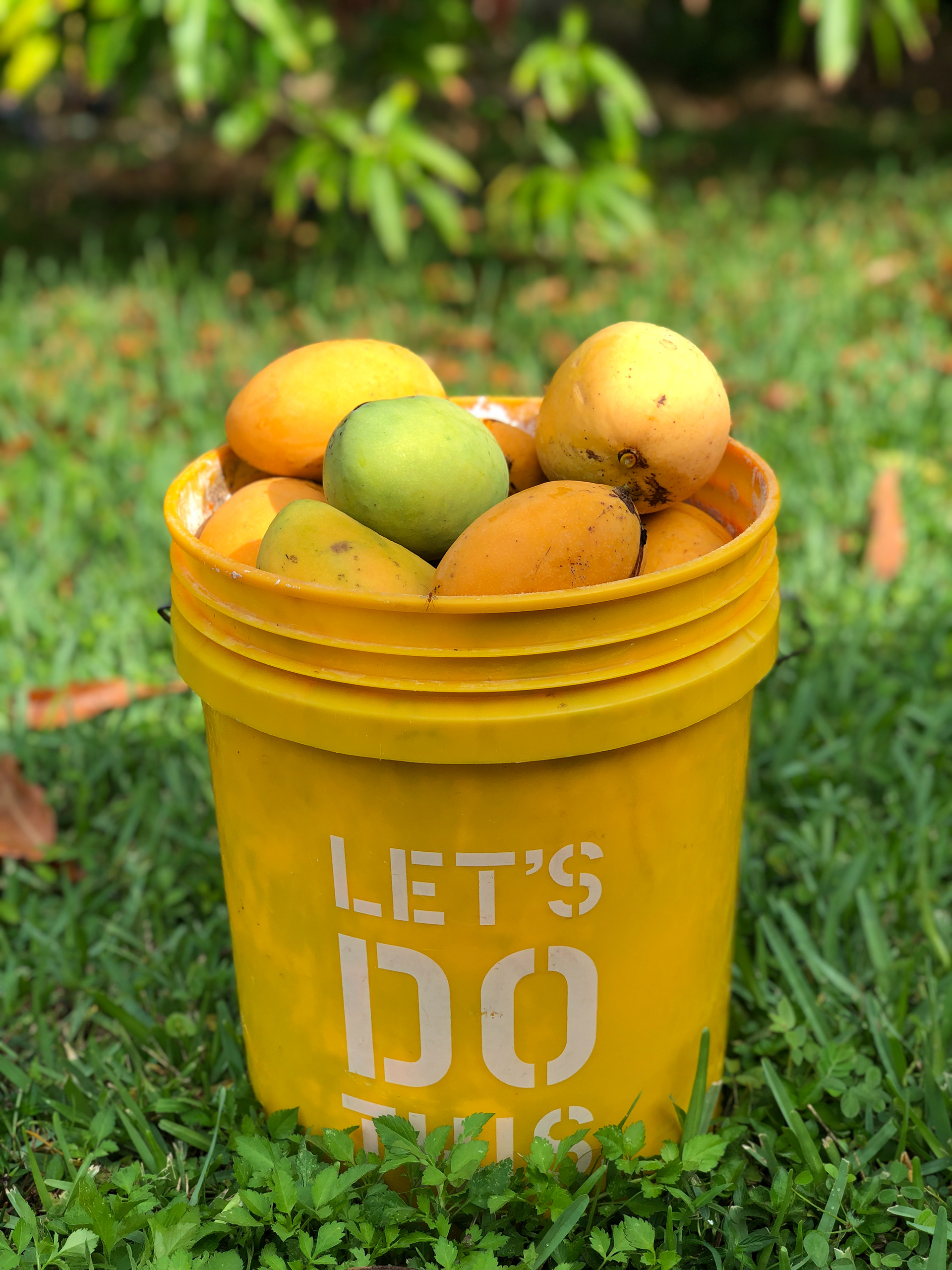
A bucket-full of mangos
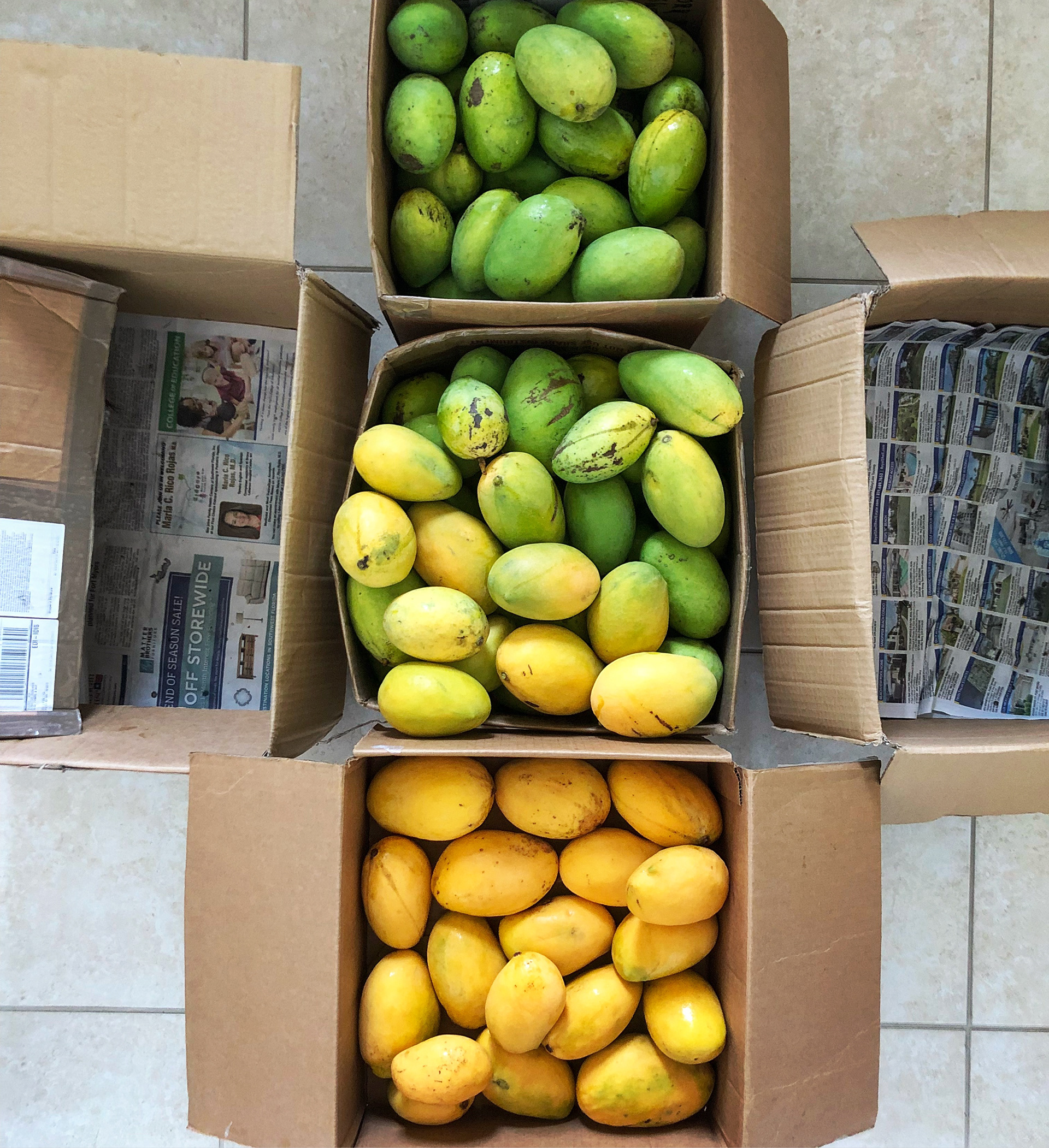
Mangos sorted by color.
Photos: Thu Nguyen, Kimling Lam, Nguyen Khoi Nguyen
It’s no surprise that Dad’s mangos have achieved fame. Once we started sharing mangos with friends, the word spread. Some asked to pay for Mom and Dad to ship them directly to them. If we really like you, we send you an entire box. Even then, running what amounts to a small mango non-profit, we had too many leftover mangos. So, about five years ago, Mom and Dad started dehydrating the mangos. At Mango-thon, we let people eat and take home as many mangos as they wanted to, and still, we knew we had to dehydrate. Fifteen mangos per dehydrator, and we had two dehydrators running day and night. With dried mangos, we could taste summer all year long.
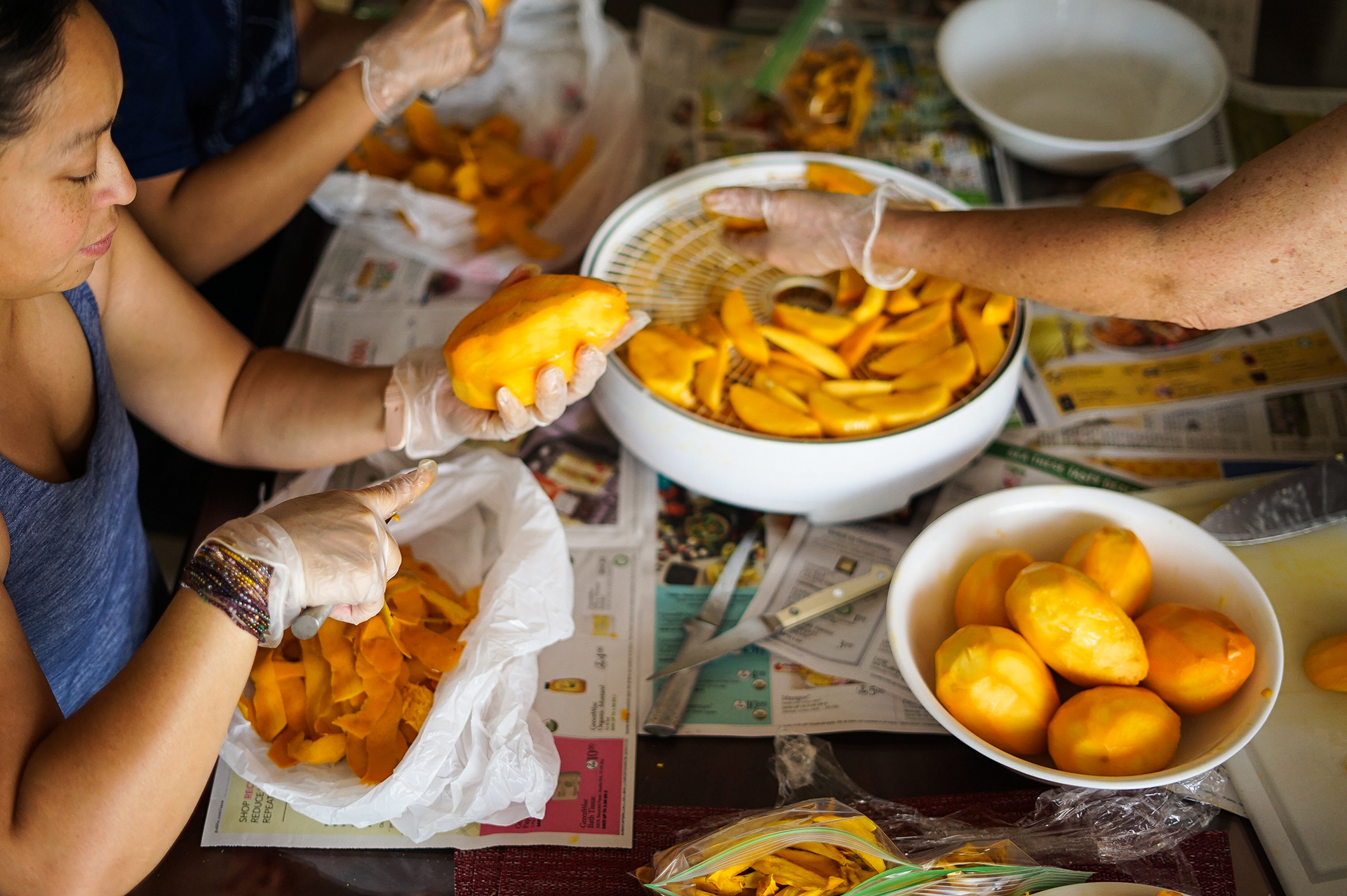
It takes a village to peel and cut mangos.
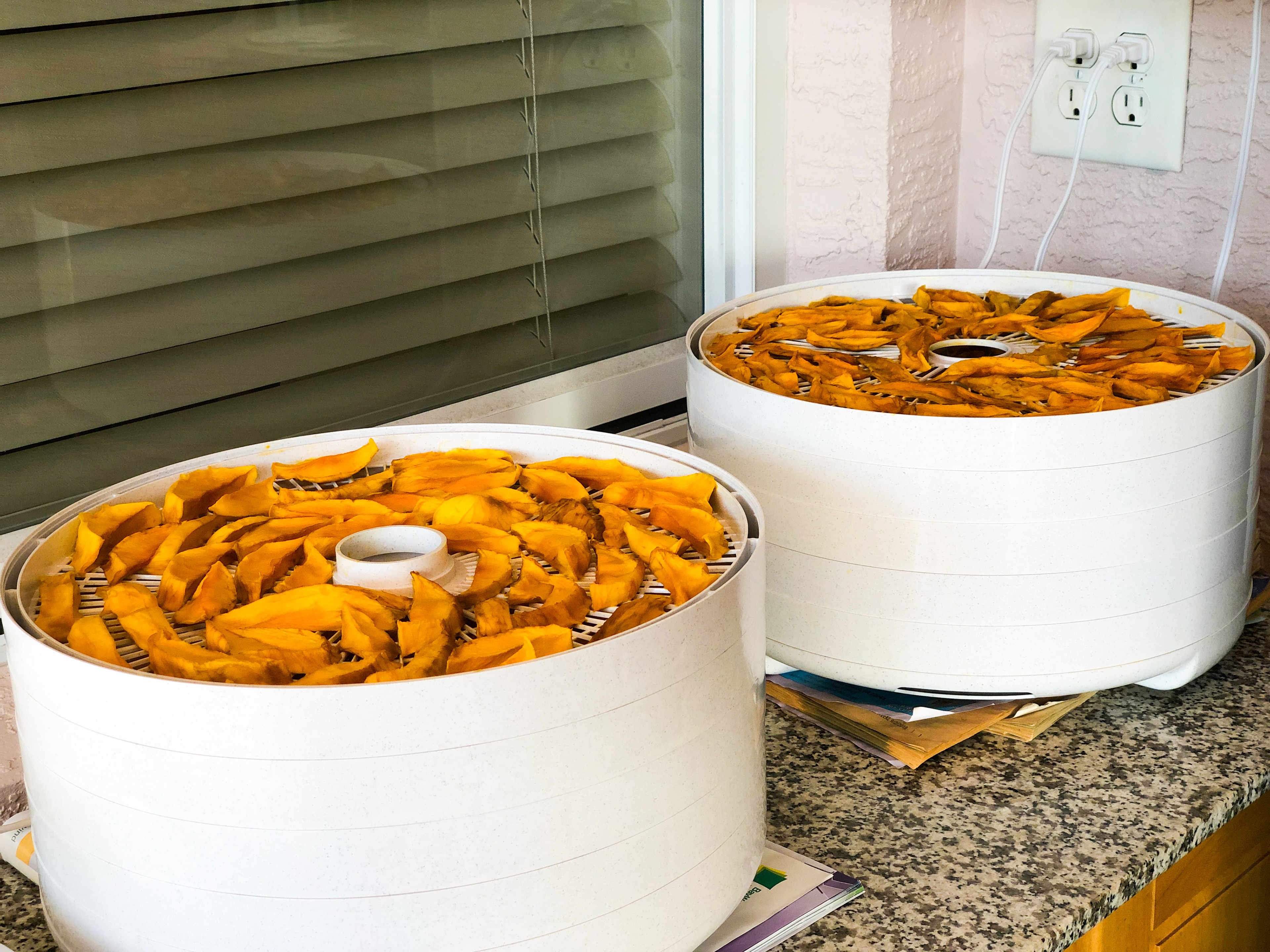
After 12-16 hours, the dehydrated mangos are ready to bag (or eat).
Photos: Nguyen Khoi Nguyen
One of my favorite memories from Mango-thon is sitting at a table with friends, peeling mangos that Mom would cut and put in the dehydrator trays. It was a big deal that she let us peel some mangos because Mom is so fast at it! Her style is to cut in the opposite direction of her body. She doesn’t let any of the fruit go to waste, peeling very thinly. The coveted portion is the seed piece. It's bigger than the rest and fun to chomp on. At Mango-thon, we had a seed-eating contest (we actually don't eat the seed, just the delicious fruit around it). Thu finished six seeds in one sitting! Mom says that if you eat too many mangos, your blood gets hot, and you might even get a nosebleed. Thu would risk all of that to eat a bowl of seeds.
Mango-thonners compete in a seed eating contest. Thu won. Photo: Nguyen Khoi Nguyen
We save the best xoài to place as offerings on the family altar. We like thinking of Dad—our favorite picture of him in Paris is on the altar—being near the fragrance of mango. Other ripe mangos are cut into little nugget-like pieces onto a dish and then put in the fridge to chill. We usually eat mango after dinner or as a snack. However, it can be the main course. Grandma used to eat xoài with plain jasmine rice.
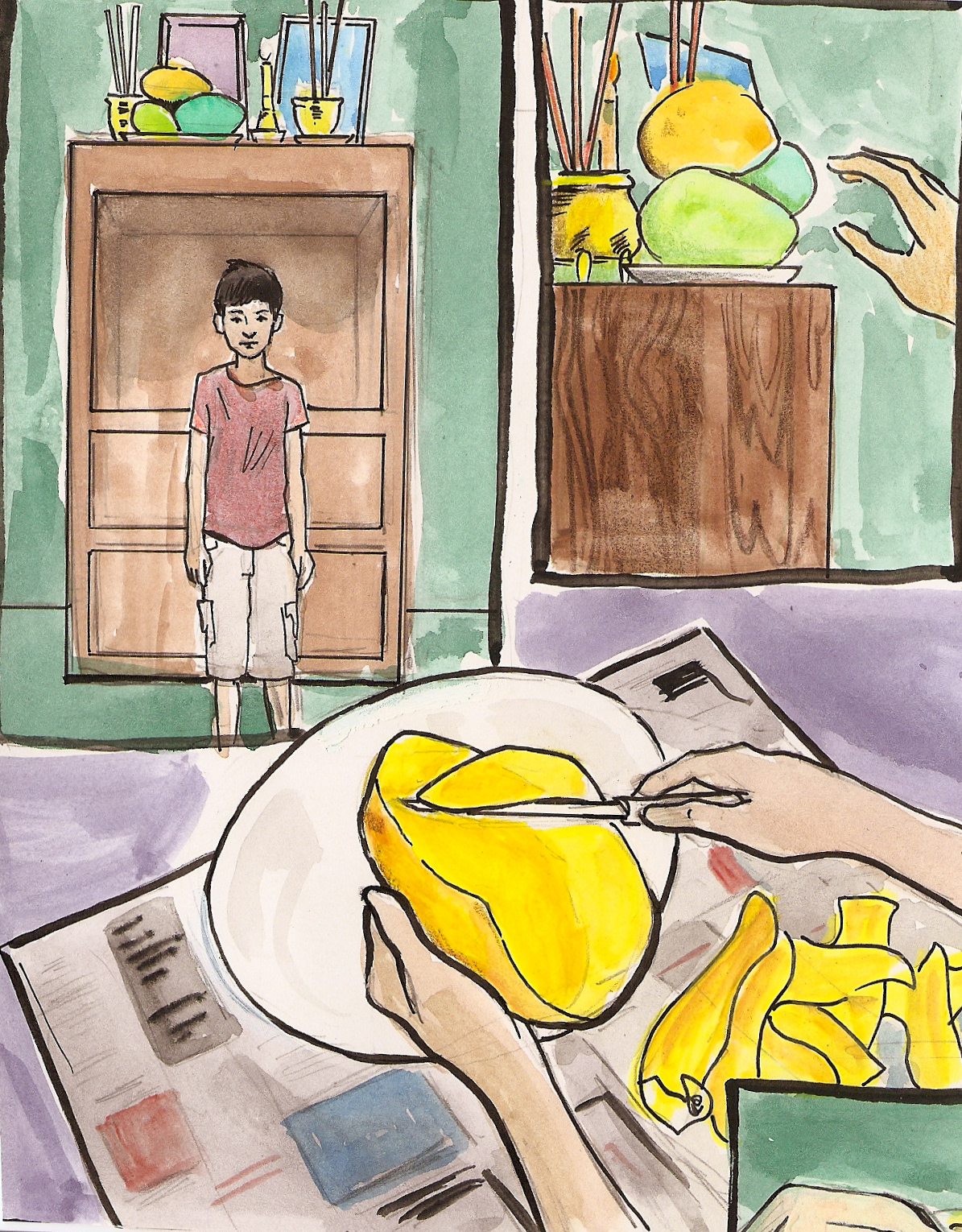
How to eat a mango.
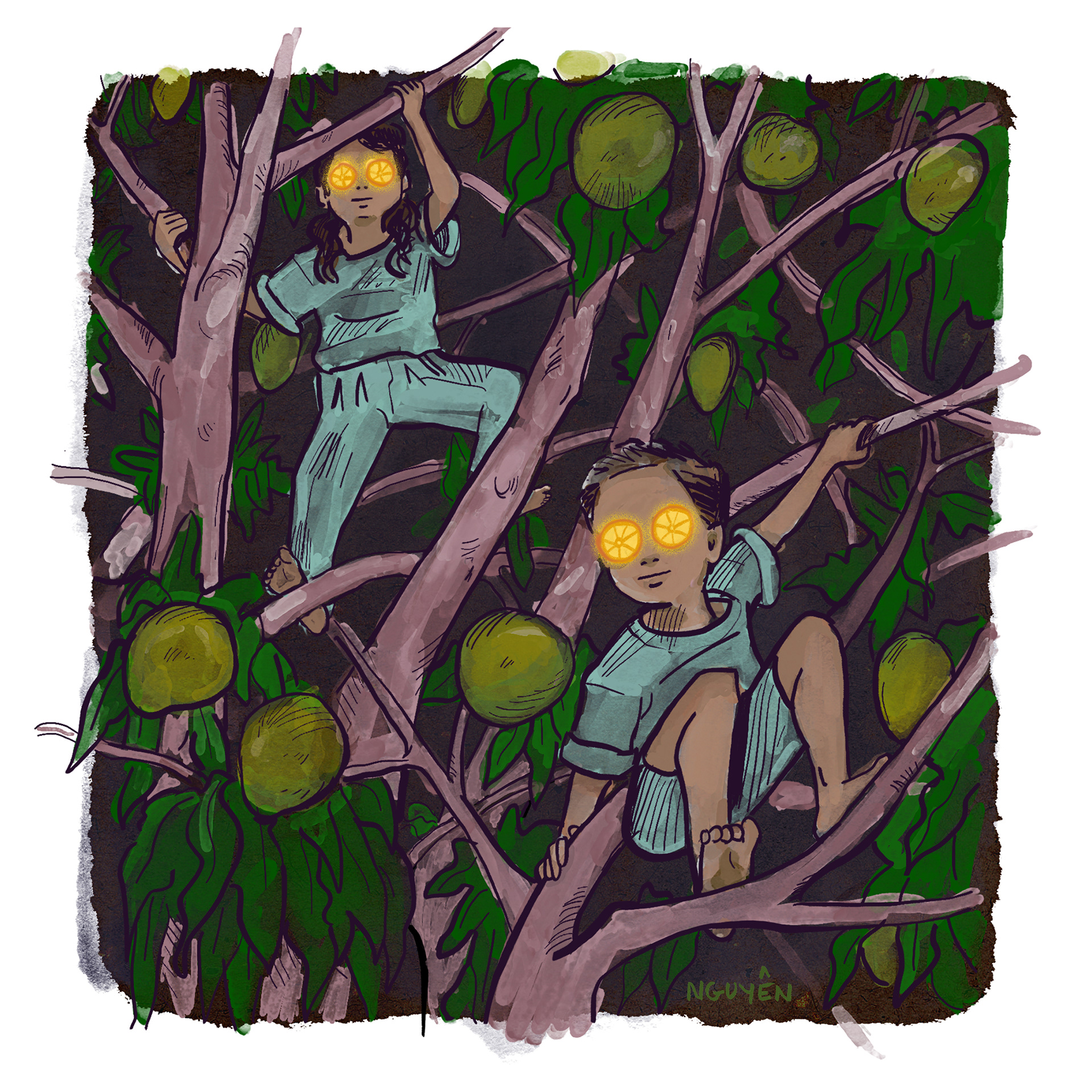
Mango midnite.
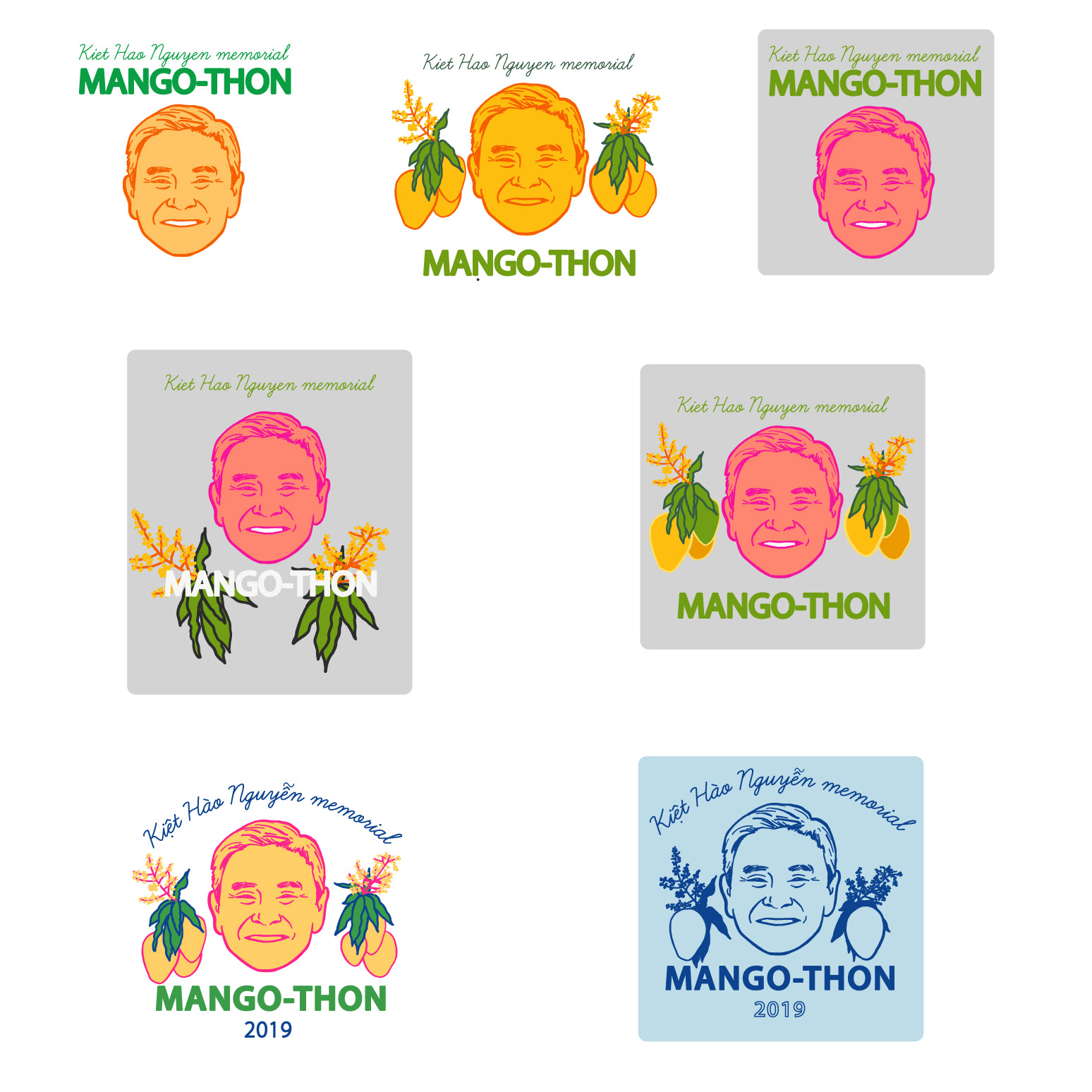
Various drafts of the Mango-thon T-shirt design
Mango art: Nguyen Khoi Nguyen
On the last night, we all gathered at mom’s house for dinner. Thu recited poetry and Nguyen performed songs accompanied by the Mango-thon All-Star Band (Paul on drums and Sam on bass). We ended Mango-thon remembering Dad the best way we knew how: nourished by music and poems, friends and family, and Dad’s delicious mangos.
Mom and Thu. Photo: Nguyen Khoi Nguyen
Awake
by Thu Nguyen
We have all put on our summer skin,
browned by minutes and hours spent out of doors,
out of our minds with gratefulness
that the hardest months are behind us.
None of us can sleep in,
and once we are up, we are all wild and working,
and you can’t catch us because we were made this way
by a man whose nickname was awake.
Even in his last months,
when rest would have been a relief,
there were pills to take and meals to eat
to make the pills more bearable.
Sleep was just a semi-colon in the day’s long sentence.
So he paced, too cold for sleep, and too weak
to go outside where he would have liked it,
where he could put up a ladder against a too tall tree
and disappear for a few hours, heart pointed towards the light.
It seems unfair now that this is when
we are finally ourselves, sun-ripened
like the fruit we spend all summer picking,
frantic not to waste his years of planting.
And still, some fall before we can catch them,
bruise and rot. We are sorry.
We aren’t sure how to go on without him;
we just keep running towards the warmth.
Dad harvesting his mangos. Photo: Nguyen Khoi Nguyen
